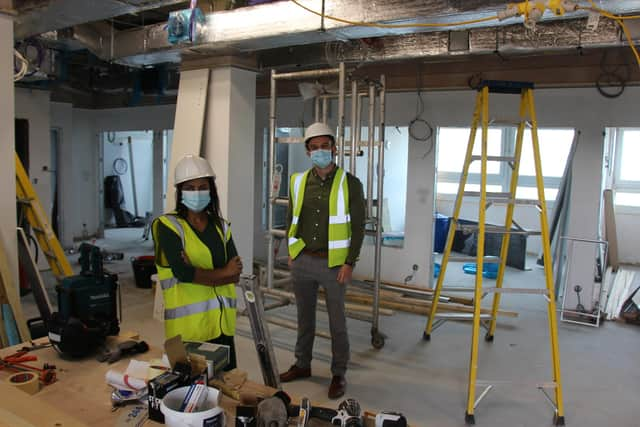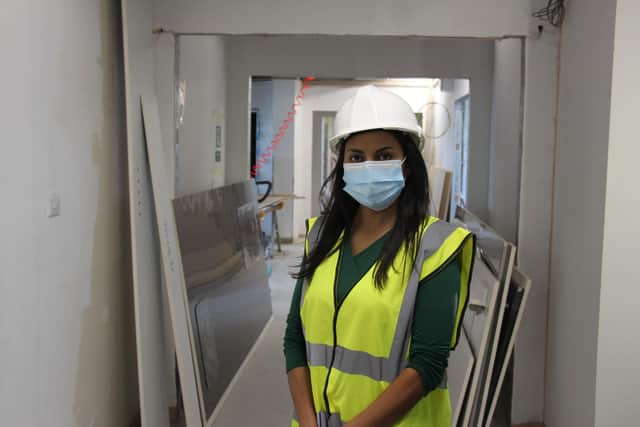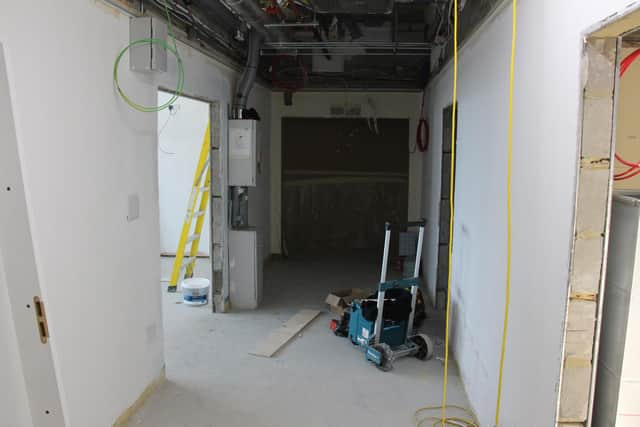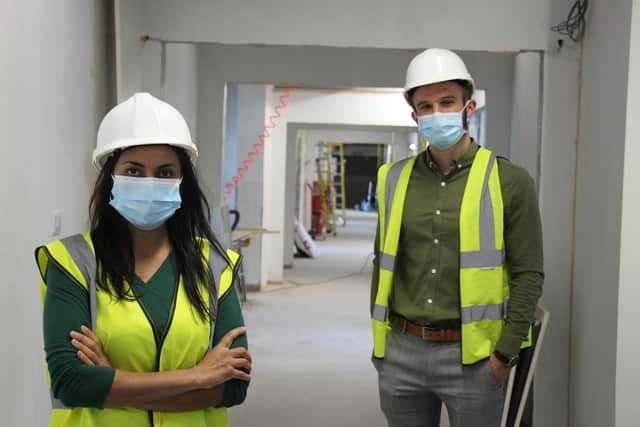Work on new multi-million pound respiratory support unit underway at Hartlepool's hospital trust
and live on Freeview channel 276
The new £2.5million unit, based in the main tower block at the University Hospital of North Tees in Stockton, will replace one of the two existing respiratory wards and provides a greatly improved environment to care for patients.
The new unit, due to open to patients in late-November, will allow for:
:: Improved infection control and isolation facilities


Advertisement
Hide AdAdvertisement
Hide Ad:: Increased visibility of patients with the creation of a new bed spaces to support patient observation
:: A central tele-monitoring and alert system
:: Increased oxygen supply and improved ventilation system
Vandana Jeebun, respiratory consultant and departmental lead, said: “COVID has demonstrated that the current respiratory unit needed significant modernisation to provide the highest level of care and to be able to meet the changing needs of our sick respiratory patients.


“One of the early lessons was that we required a bespoke space to be able to better visually monitor our patients who are at high risk of deterioration. Traditional ward layouts are unfortunately not designed to facilitate this. In addition, we knew that we needed significant changes in the provision of oxygen supply alongside modern ventilation systems to be able to care for many of the sick patients in the right place.
“The challenges we faced during COVID drove us to design a unit that we felt would serve the medical needs of our sickest COVID as well as non-COVID respiratory patients better especially during winter periods.
Advertisement
Hide AdAdvertisement
Hide Ad“A lot of team work has gone in to meticulously design this bespoke unit. It’s almost ready and the huge investment in time and funds will soon be benefitting patients.”
Jordan Pearson, project officer from NTH Solutions, the wholly owned estates management subsidiary of North Tees and Hartlepool NHS Foundation Trust,


commented: “It’s been hard work but this ward will soon be unrecognisable from the old unit.
“Developing a new respiratory unit isn’t just a redecorating job. It’s been a complete remodelling. We’ve knocked out walls, put new walls up, created new rooms, installed new electrics and oxygen lines – it’s a massive redevelopment.
Advertisement
Hide AdAdvertisement
Hide Ad“Our contractors Geoffrey Robinson Ltd have been great and we’ve had excellent support from the respiratory clinical team. We’ve worked together hand-in-hand throughout the whole project.”
During the redevelopment on the new support unit, respiratory patients have continued to be cared for in the hospital’s other high support units.


The new respiratory support unit is on track to be open to patients on Monday 22 November.
A respiratory support unit is an area of enhanced care that enables a higher level of monitoring and respiratory intervention than would be expected for a routine ward environment for patients with complex respiratory disease and at risk of deterioration, but who do not currently require critical care.
Advertisement
Hide AdAdvertisement
Hide AdIt also provides a step-down facility for critical care patients as the need for intensive care reduces.
The new facility will allow these high acuity patients to be co-located to facilitate concentration of multi-professional skills. Central digital monitoring and enhanced visibility support timely recognition and action of any deterioration in these patients.